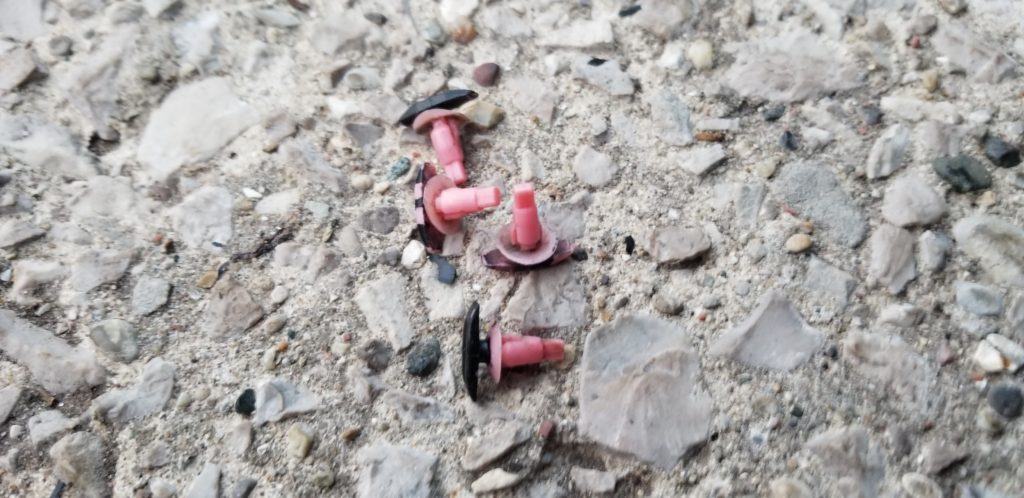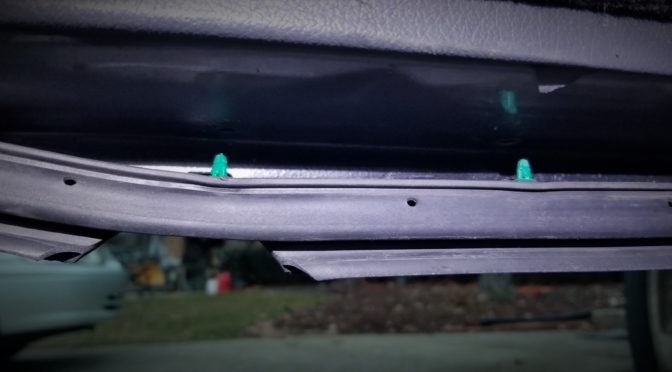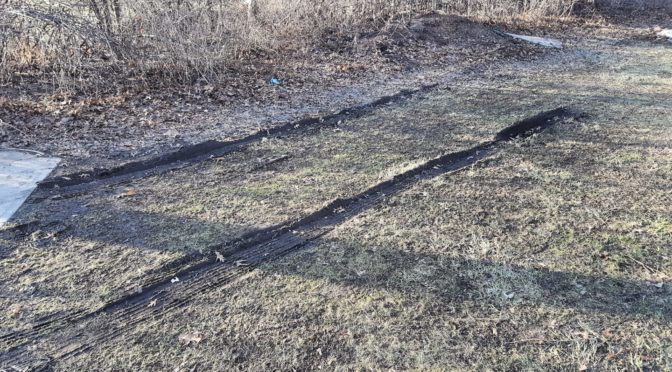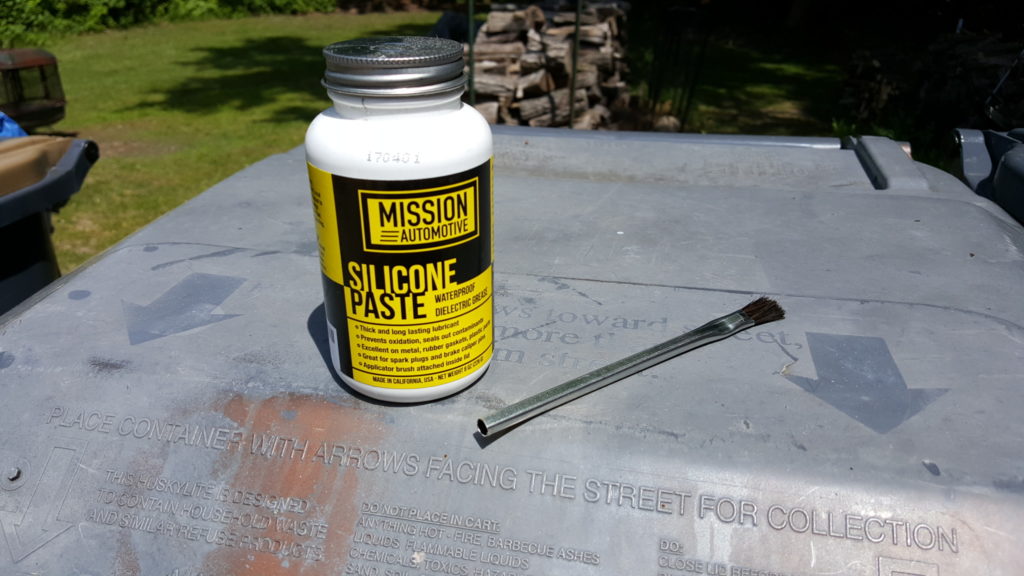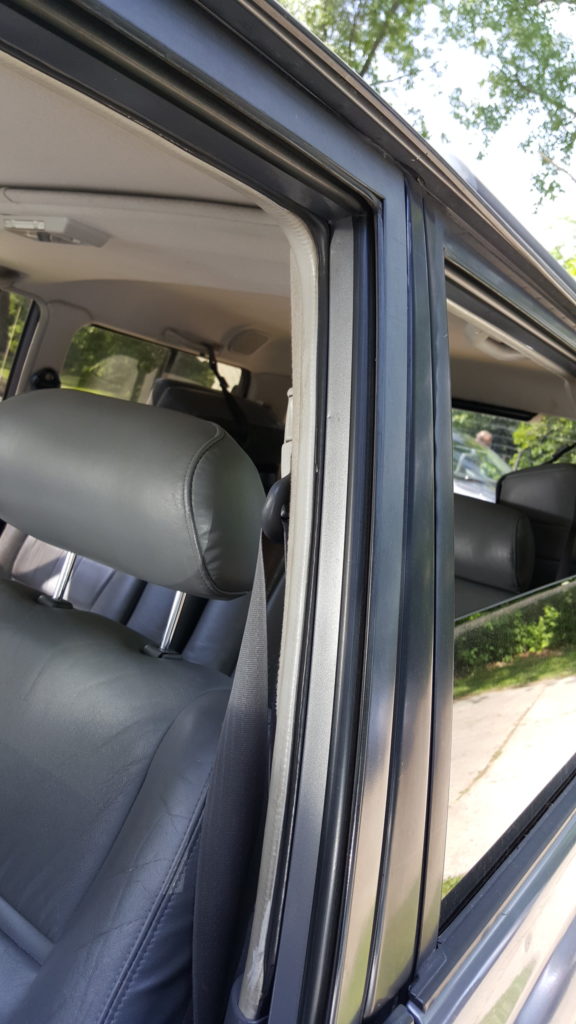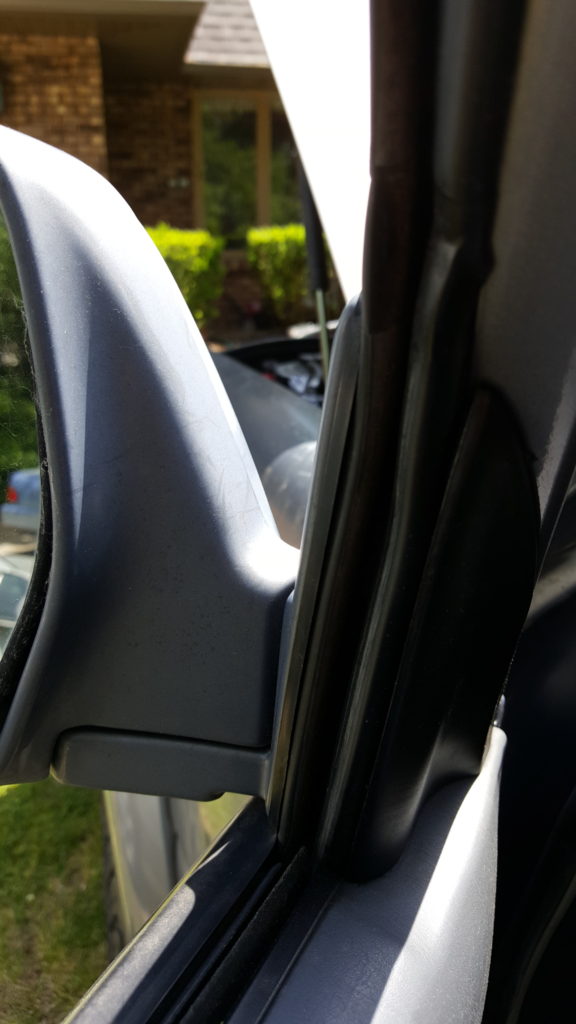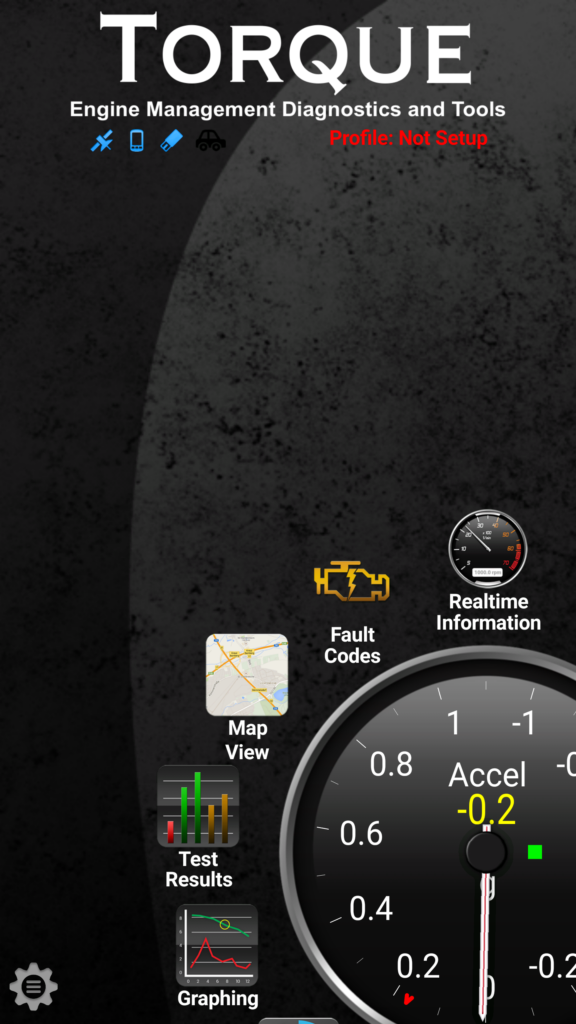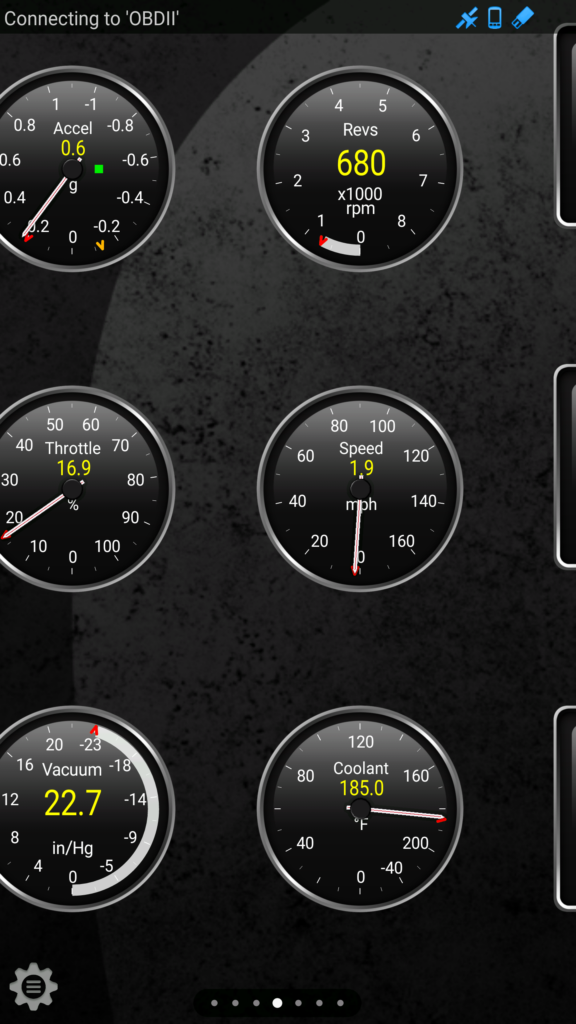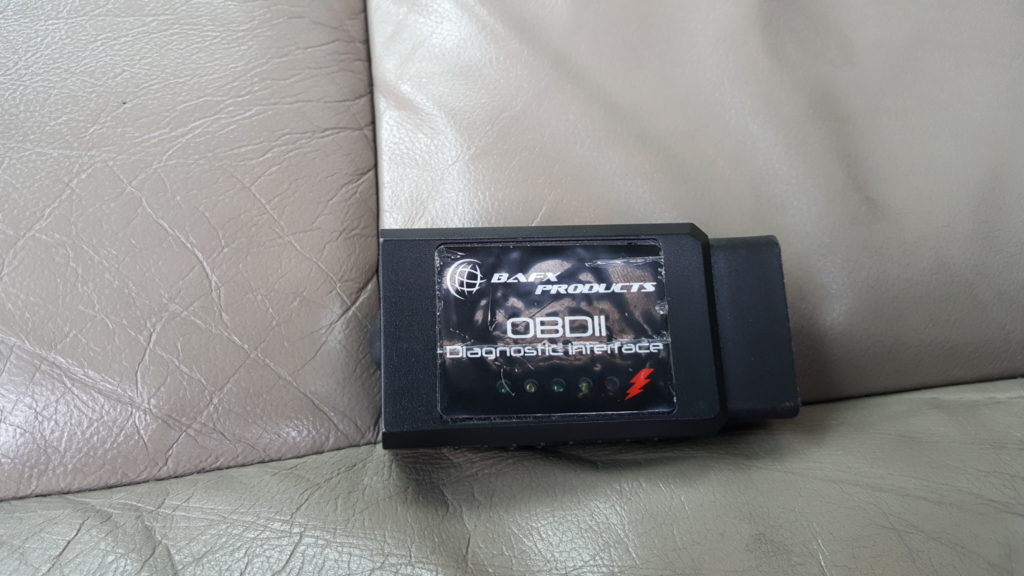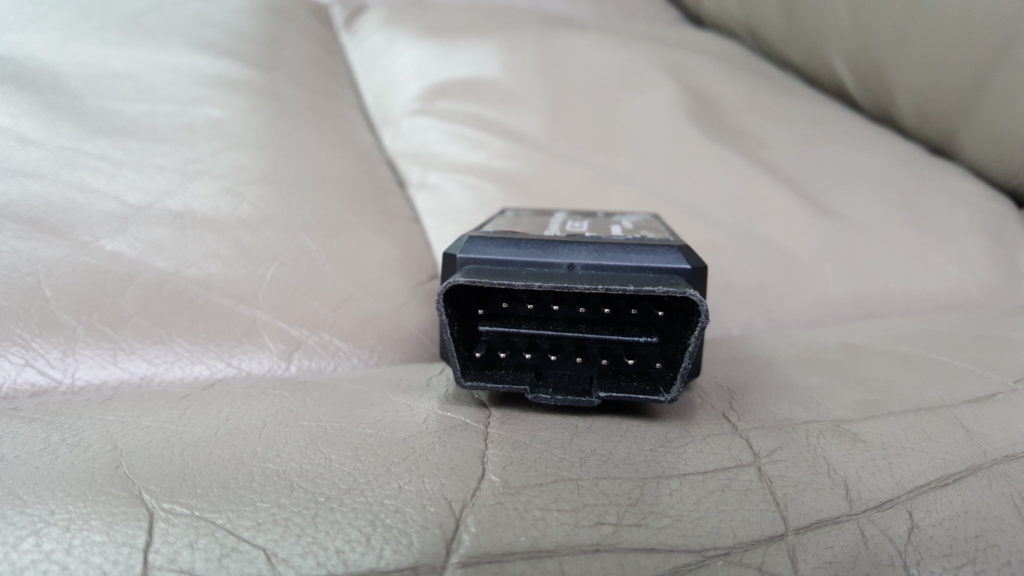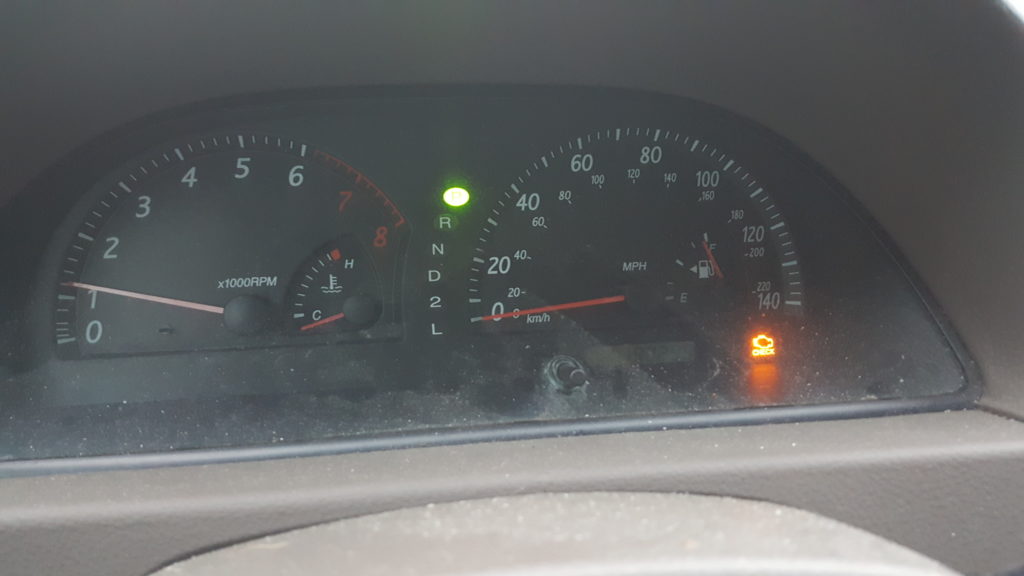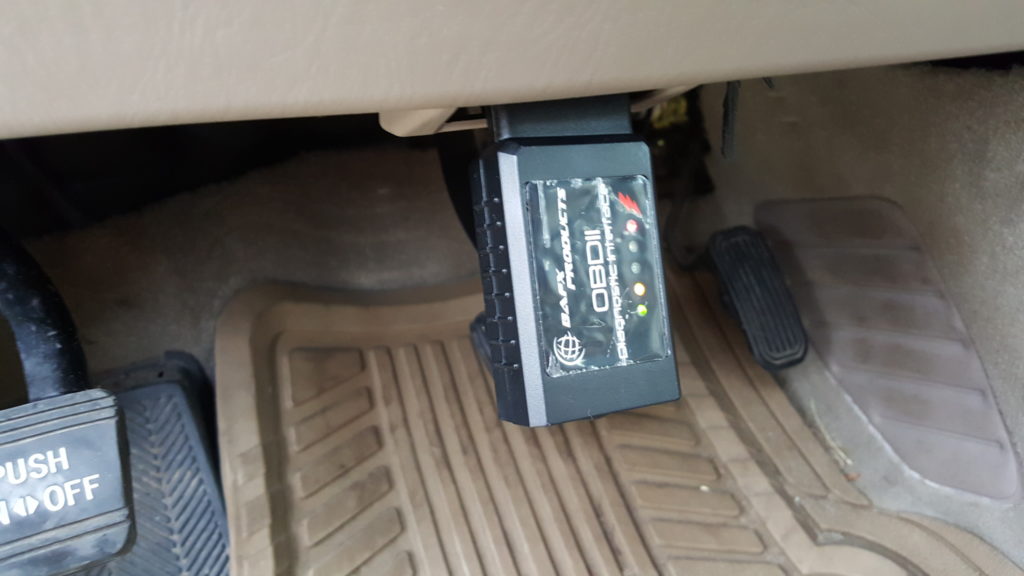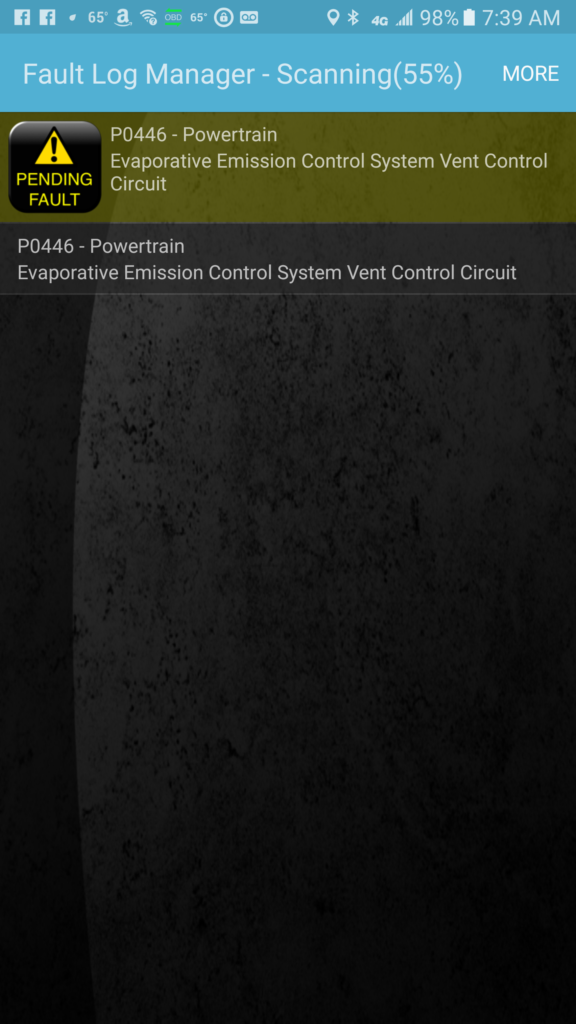Well, I parked our full size Ford Transit van at the end of the driveway on the grass to get it out of the way. Of course, given the recent snow melt the ground turned out to be too muddy and soft to support the van’s weight – but I didn’t notice that because it took a while to slowly sink. Yeah, I didn’t notice anything – my wife did we she went to use it! Oh crud. So she called my cell phone and was none too happy. I didn’t really worry about it because my truck could pull it out – or so I thought.
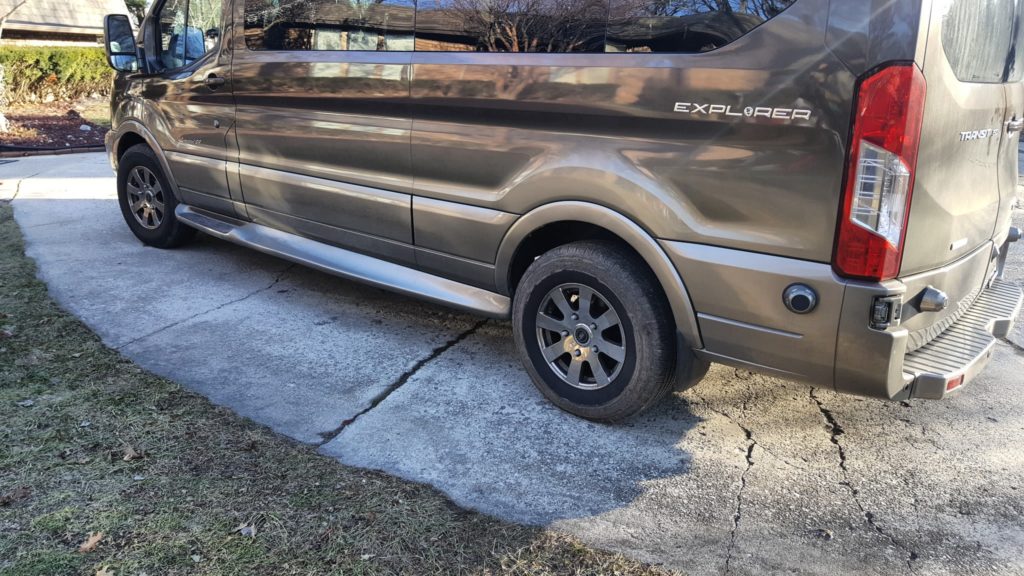
I drove to the house, cockily pulled my trusty old 96 Landcruiser up in front of the van and got out one of my big tow straps and walked up to the van. Should have been easy, right? Wrong. Nothing, nada to hook on to. Ford, in their infinite wisdom does not put a tow hook, eye or anything up near the bumper! Crap, crap, crap. [Note, near the bottom of this blog post I added in what I found after researching how to recover a full size Transit. I’m still irked at Ford.]
Did I mention my wife was standing their fuming? Yeah, she was. I should have known better than to park the heavy full size van on soft ground. Point taken – I didn’t realize it was that soft.
At any rate, I went back and looked at the 5″ deep rut the driver’s side rear tire had dug for itself. By the way, these photos are after removal.
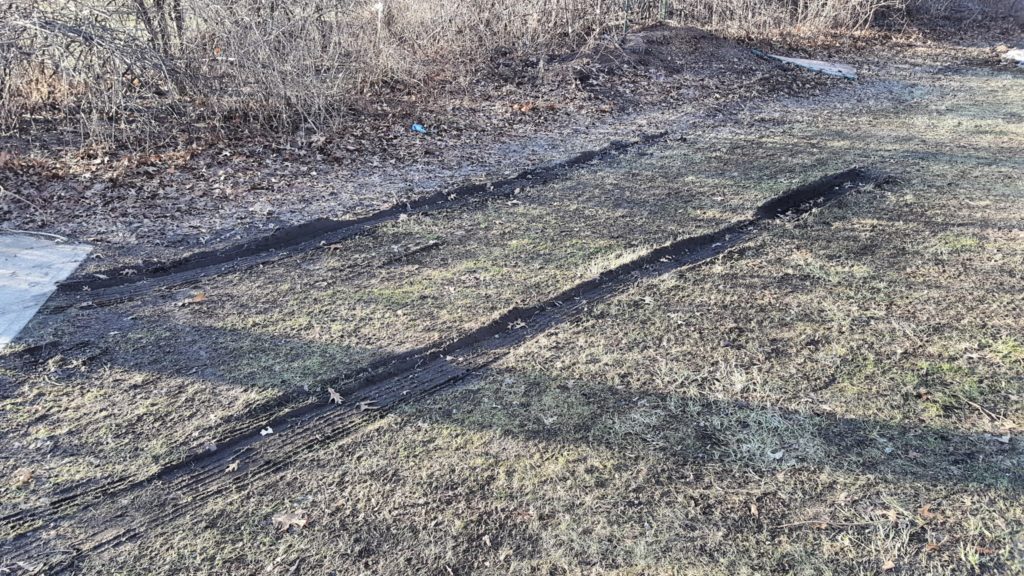
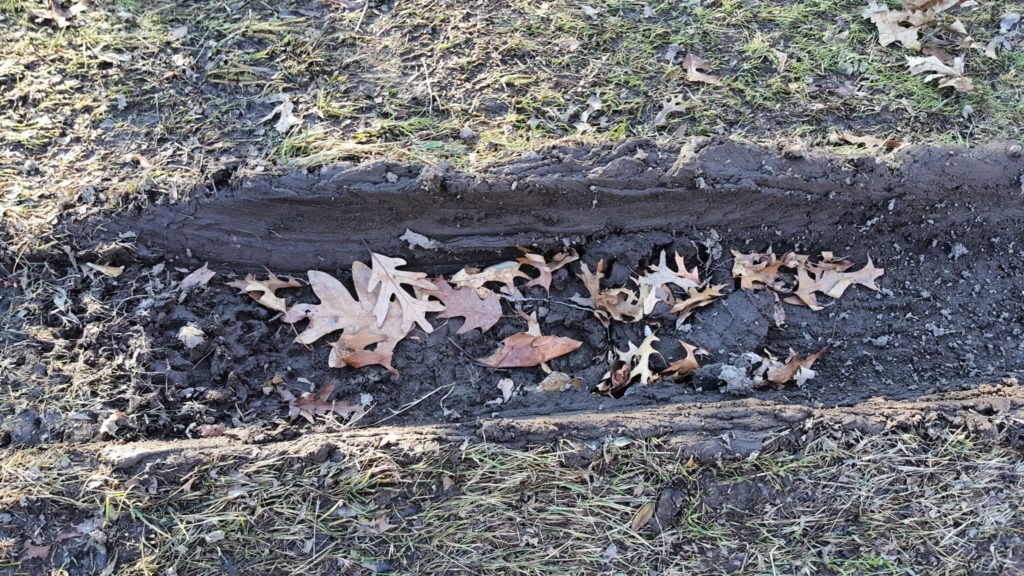
I needed something long to fill the ruts and give traction. Luckily, back in 2010 and then in 2014 I bought these things called “traction mats” from a company called OTW Enterprises who touted them as portable tow trucks. In 2010 I bought the black ones after getting my truck stuck on ice with the plow blade buried in a snow mound. In 2014. I bought an orange set to put in my wife’s car in case she got stuck. Here they are after I hosed all the mud off.
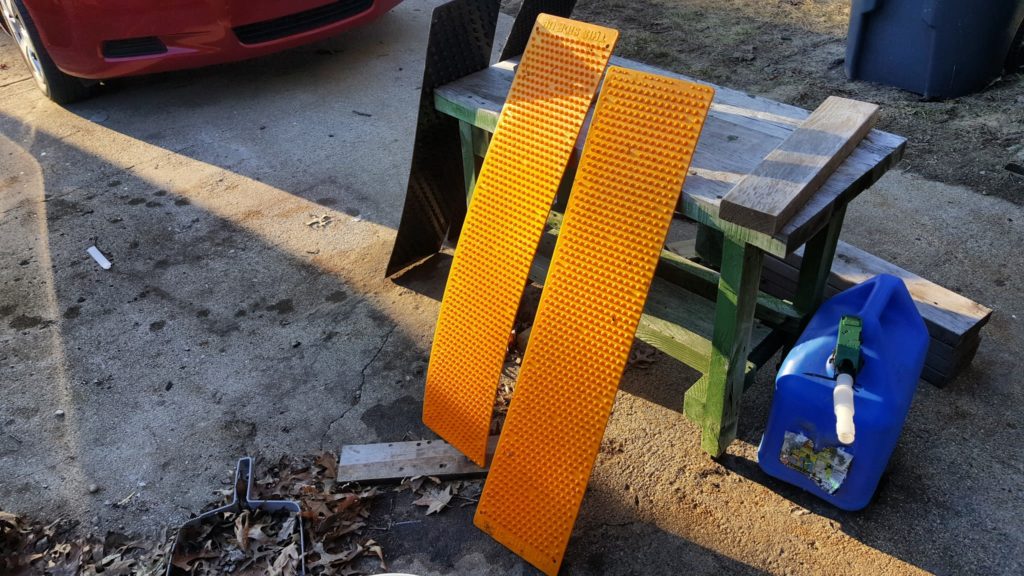
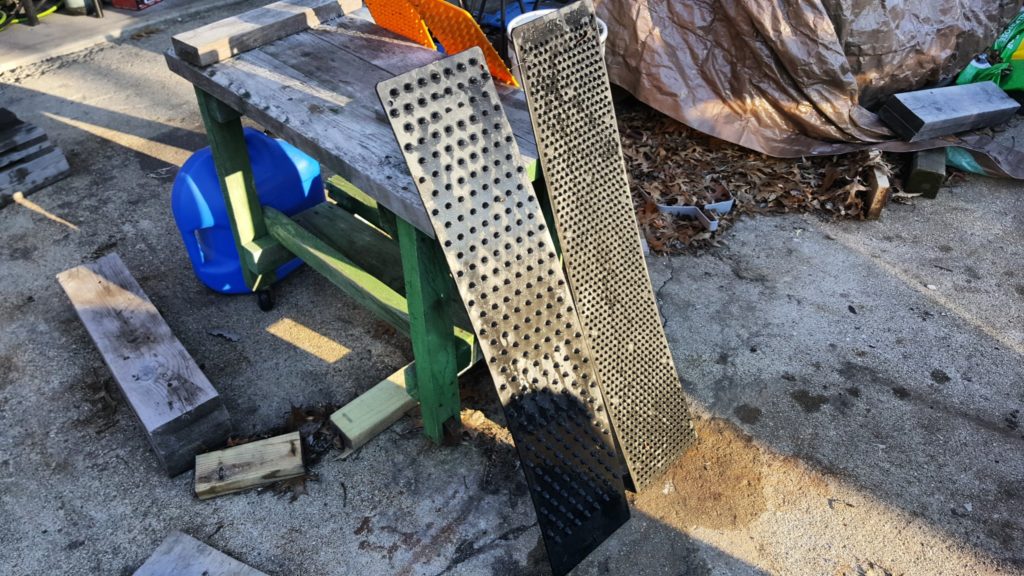
Well, they bounced around in the trunks for a while and did bail me out a couple of times over the years but were actually leaning on the outside wall of my shop. They don’t fold and while they fit in the trunk you have the little plastic spikes catching stuff so I tool them out at some point and leaned them against the wall of the shop. At any rate, I walked over and they were exactly what I needed. Each mat measures 36″ long and 8″ wide. Since I had four, I butted on up against the front of each tire and placed a second one in front of it to help the tire get up and out of the rut. The sides are labeled by the way – the relative few long spikes go down and the side with many spikes goes up.
I got in and rolled the the van back a bit and then forward to get up on the mats. I then slowly gave it more gas (not much) and the van up and forward onto the mat and got out of ditch and I kept moving forward onto the pavement. I don’t have any action photos – things were stressful at the time and I really wasn’t thinking about a blog post 🙂
Well, I was pretty pleased with the outcome. Wreckers charge at least $65 to come out to our house so avoiding that charge is always a good thing. My wife was relatively happy but gave me a hard time for causing the problem in the first place.
Are these mats perfect? No. They will fly out from under your car if you don’t go slow and make sure you have the correct side down. Even then they sometimes do so I would never have someone stand behind the car. My recommendation is to go slow – avoid your spinning tires and rock the vehicle onto the mat if need be – don’t spin your tires onto them.
My wife is so impressed she wants them back in the cars. I just wish they had a carry case but I do recommend them as another tool to keep in your bag of tricks.
I hope this helps you out.
Comment about Ford and Their Oversight on Towing
By the way, I looked up the tow/winch location up for future reference so if you are surfing the web trying to figure out how to tow a full size 2016 Ford Transit, here is the reference link at Ford – click here.
Look just behind the tires at the frame and you’ll see the eye rings that are part of the frame. You can’t make this stuff up — Thanks Ford. It drives me nuts when you look at decisions made in ivory engineering towers vs. real world needs. Sure, let’s bury it under the van, make it hard to get to and pretty much ensure damage will occur if you actually use this to pull the van for whatever reason.
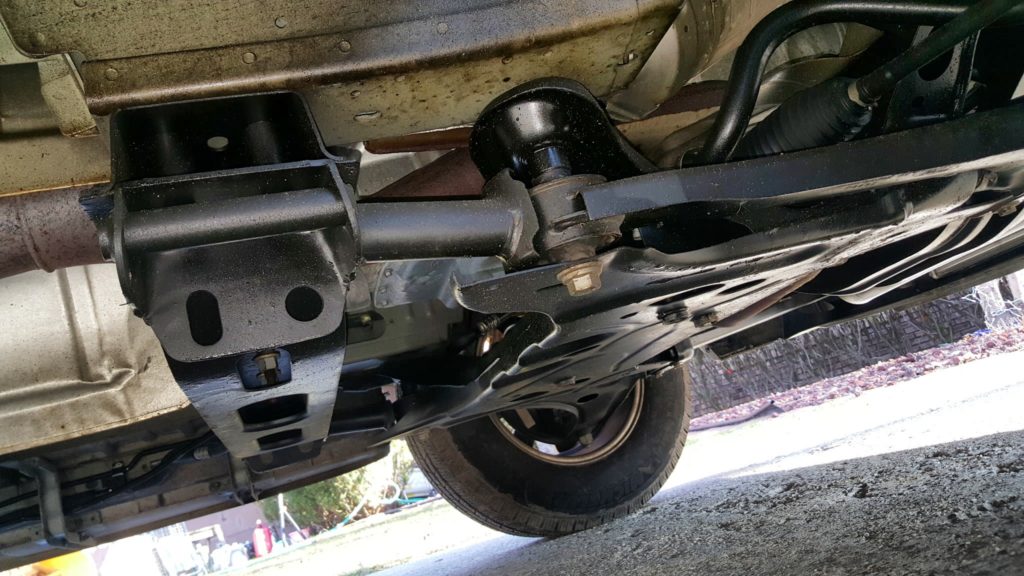
Now look how their factory winch attachment point lines right up with hitting the front radiator. If you pull this at just about any angle where the recovery vehicle is higher than the van then the cable/strap is going to cut right into the aluminum radiator at the front. In the next photo, you can see the silver aluminum radiator just above the lip of the bumper molding.
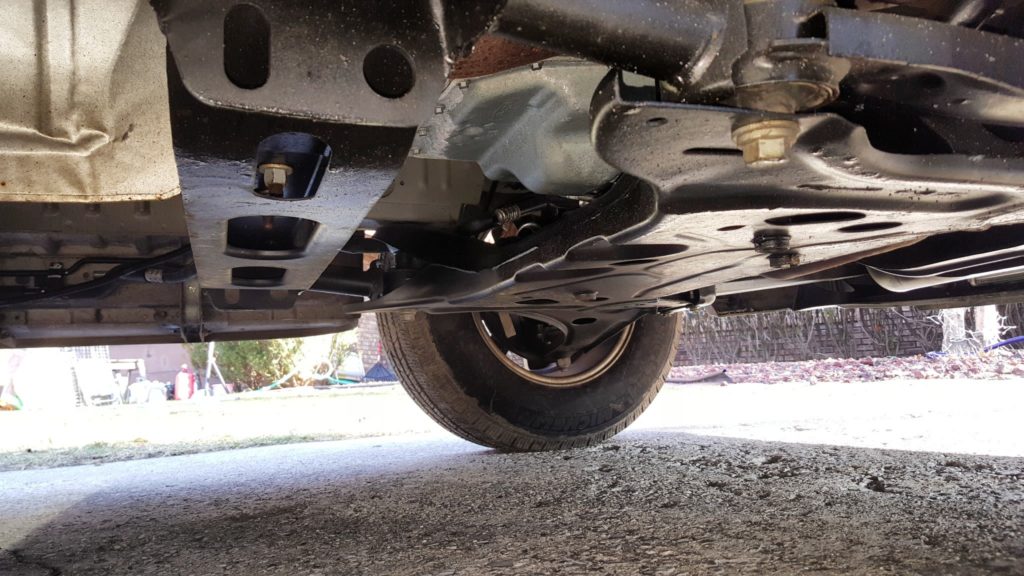
If you wanted to protect that radiator, you’d actually need a harness with something to push the attached cable lower to the ground – or fabricate another attachment method. Maybe my 4″ drop hitch in my rear class IV receiver would be low enough to tie onto vs. my truck’s winch or front recovery hooks. … Something for another day. I didn’t buy a new van to have to worry about something people in rural areas need regularly in the winter. They should have been in the front.
2/11/2018 Update: The traction mats bailed me out again when I got the van stuck on ice in our yard while turning around. I’ve come to realize the van does a fair job on the road but the tires are damn near useless on uneven icy surface, With this van, it’s really handy to have four. With only two handy, I could move the van forward and then get stuck, move the mats, move forward again, get stuck, etc. I had to do the cycle about three times. I think if I had all four handy it would have done the trick in one shot because I could have built up some forward momentum. I now have all four stored together, We’re nearing the end of Winter finally and I think I will keep all four in the van next year and need to find some kind of carrier bag to store them in.
Like this:
Like Loading...

